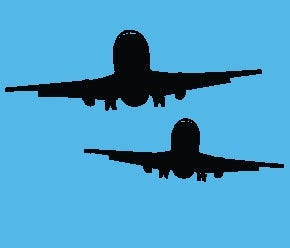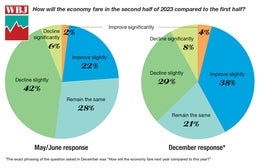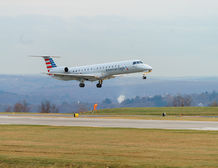Briefing: Airport landing system

The Federal Aviation Administration (FAA) has committed itself to upgrade the landing system at Worcester Regional Airport. This has been a top priority for the Massachusetts Port Authority (Massport), which runs the airport and lined up JetBlue to resume commercial passenger service in Worcester four months ago. The agency said an upgraded landing system — called Category III, or CAT III — will help make the airport safer and allow for long-term growth.
How much does a CAT III system cost?
Massport said last year that such a system costs $35 million.
What does it do?
CAT III helps pilots land and get aircraft safely airborne at airports with low visibility, especially when they're shrouded in fog. That, along with low cloud cover, has been a long-standing complaint about Worcester Regional Airport since it sits at a high elevation (about 1,000 feet above sea level). Even since it launched service from Worcester in November, JetBlue has had to cancel some flights because of the fog. Even before JetBlue came to Central Massachusetts, the carrier's CEO, David Barger, reportedly said the airport's landing system had to be upgraded.
How long will it take before a CAT III is installed?
Massport spokesman Richard Walsh said it would take several years, because the project needs to go through a planning and environmental review process.
What other airports have CAT III systems?
According to AirNav.com, Denver International Airport, which is more than a mile above sea level, has CAT III on some of its runways. One runway at Logan International Airport in Boston has a CAT III, as does T.F. Green Airport in Warwick, R.I., according to ILSlist.com. (ILS stands for instrument landing systems.)
How long have officials here been considering it?
Officials have been talking about securing a CAT III system for the last two years, since former U.S. Transportation Secretary Ray LaHood visited Worcester to survey the city's transit infrastructure. His visit came three months after Direct Air ceased flying into and out of Worcester, leaving the airport without a commercial passenger carrier. A month later, a judge ordered Direct Air into Chapter 7 bankruptcy.
After his meeting in Worcester, LaHood urged JetBlue to consider adding flights in Worcester.
Read more
Massport: Worcester airport visibility improved
Marketing called key to city airport's courting of Latinos
Worcester's growth hinges on transportation investments
Trade show connects Central Mass., Florida tourist attractions











0 Comments